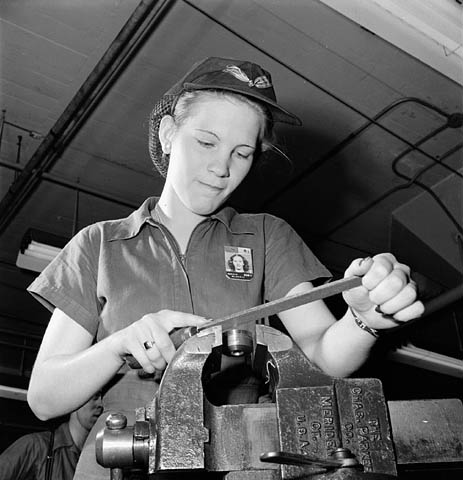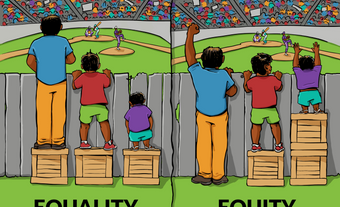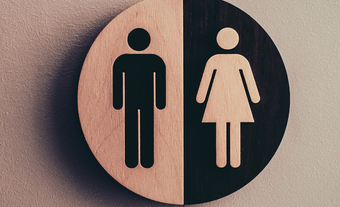Over the course of several thousand years, gender roles in Canada have shifted dramatically. In general, they were more flexible in Indigenous societies and more rigid in settler communities. However, even in colonial times, gender roles were not as narrow as might be expected, particularly on farms and in frontier communities. Gender roles became stricter during the Victorian era, when men and women were relegated to “separate spheres.” Gender roles became more elastic during the world wars, but traditional gender norms were re-established in the 1950s. Since the 1960s, though, gender roles have become more flexible.
Gender Roles: The social roles and responsibilities considered to be acceptable based on an individual’s biological or perceived sex. This includes occupation and division of labour.
Gender Roles: Background
This article presents a simplified account of the history of gender roles in Canada. However, the topic is extremely complex, and it is important to keep a few things in mind. First, gender roles are highly specific to a particular time and place — what is considered feminine in one time period and location may be considered masculine in another. Second, gender roles are culturally specific. Different cultures, even when they live together, may have very different ideas about gender roles. Therefore, class and ethnicity often affect gender roles in a community. Third, gender roles are inconsistent. While each society has its own gender norms, these norms are more like guidelines than rules. There are always exceptions. Fourth, while the idea of a gender binary — that there are only two genders (women and men) — is very common, there was a variety of gender identities, expressions and roles in the past. Individuals of non-binary genders have always existed. And, finally, the idea of gender progress — that we are moving from a more discriminatory past to a more accepting present — is a myth. For example, women’s roles, influence and freedoms have changed many times throughout Canadian history. Women living in New France often had many more rights and freedoms than women living in Quebec in the 1950s.

Indigenous Gender Roles
It is difficult to make a general statement about Indigenous attitudes toward gender roles. Each of the hundreds of Indigenous communities in North America has its own distinct views. However, for the most part, Indigenous cultures view gender roles differently than Western cultures. Traditionally, Indigenous cultures had defined gender roles, with different responsibilities assigned to men and women. However, these roles were seen as complementary and equally important.
For instance, in Oneida traditional culture, women were responsible for doing household chores and gathering food, while men were responsible for hunting large game, gathering wood and learning how to fight. The Oneida were led by clan mothers and chiefs. Clan mothers, often elders in their communities, were responsible for selecting chiefs and ensuring the welfare of their communities. Chiefs were responsible for making decisions in the best interests of the entire community. Clan mothers and chiefs were considered equally powerful and worked in balance.
At the same time, many Indigenous communities believe that gender is fluid and that there are more than two genders (women and men). Some communities think that individuals can change genders for ceremonial purposes. Others recognize individuals who are neither male nor female or both male and female at the same time. Others recognize that individuals may be assigned a gender at birth and live as another gender. Individuals of these genders hold different responsibilities, depending on the communities in which they live. Some are considered to be spiritual leaders or healers, while others are considered to be completely ordinary. (See Two-Spirit.)

Gender Roles in the Colonial Era
Gender roles in the French and British colonies in North America were typically much stricter than those in Indigenous communities. In general, European settlers only acknowledged the existence of two genders: women and men. Each was assigned specific responsibilities. Women were responsible for domestic work, including household chores and child-rearing. Men were responsible for work outside of the home, including agriculture, logging, politics and various professions, such as law and medicine.
While, in theory, the work of women and men was equally important, the colonies were patriarchal. European colonists believed that men were the superior gender, and men had political and property rights that were denied to women. For example, both English and French colonies included policies that are now referred to as “femme couverte” or “coverture.” Once a woman was married, she was no longer considered to be a legal person. She could not vote, own property or even testify in a trial.
However, while these gender roles were well defined, they were not always strictly followed. This was especially the case outside of established urban centres, such as Montreal and Toronto. For example, women on farms regularly participated in various agricultural activities, such as cutting down trees and planting and harvesting crops. They took responsibility for these tasks if their husbands, fathers or brothers were injured or left to find work elsewhere.
There are many records of women working outside of the home as fur traders, tavern keepers, innkeepers, cooks, laundresses, seamstresses, miners and factory workers. Women also participated in cottage industry work, where some factory work, often related to textile manufacturing, was completed in a person’s home. Gender norms for men were generally less flexible. However, in areas where there were few women, such as mining camps in British Columbia, men took on domestic tasks like cooking and cleaning.
Men generally had more political and property rights than women. However, this was not always the case. Women in New France were able to divorce their husbands by providing evidence of abuse or abandonment. The same was true for women in Nova Scotia and Prince Edward Island in the late 18th century. Historians have also found records of women voting in municipal elections, such as the 1832 Montreal by-election.

Gender Roles in the Victorian Era
In the 19th century, gender norms for women and men became much stricter. This new model of gender norms in the Victorian era is known as the “doctrine of separate spheres.” According to this ideology, women and men occupied their own specific spheres, or areas of concentration, that were best suited to their biology and nature. Women were perceived to be more domestic and maternal, so anything in the private sphere, including housekeeping and childcare, was their domain.
On the other hand, men were seen as naturally more outgoing and ambitious, so they were best suited to the public sphere, or the world outside of the home. In theory, these two spheres were complementary and equal. However, in practice, Victorian society was patriarchal. The idea of separate spheres was used to deny women access to the same rights and opportunities as men.
The idea of separate spheres was created by and for members of the middle and upper classes, and it was very influential throughout Canadian society. However, economic realities made this separation largely impossible for women on farms, working-class women and those living in poverty. As was the case in the colonial era, there was more flexibility for these individuals in terms of gender roles. Both women and men continued to participate in activities that were generally seen as outside their “proper” gender roles.
While the philosophy of separate spheres was used to deny political rights to women, some women reinterpreted this philosophy and argued that they deserved particular rights as women. According to this argument, known as maternalism, women were mothers to the nation and, therefore, deserved to have a political voice. (See Women's Suffrage in Canada.)
By the end of the 19th century, gender roles for women began to widen. Some (white) women gained access to domains that were previously closed to them, such as politics and higher education.

Modern Era (1910s to 1980s)
The 20th century saw several dramatic shifts in terms of gender roles for women and men. Earlier norms from the Victorian era persisted well into the early 1900s, yet there were more freedoms for women during this period. This was especially the case during the First and Second World Wars, when thousands of women engaged in waged work and public life. Women were asked to fill the positions left behind by the large number of men who served overseas in the military. (See Canadian Women and War; Women in the Military.)
The war era is often seen as a “watershed” moment for women’s equality. However, the reality was much different. First, many women have always worked outside of the home. Many of the women who took up factory work had already been employed before the war. Second, the positions filled by these women were often simplified versions of the ones formerly held by men. Third, women were often paid less than their male counterparts and were rarely able to find positions in management. To many people, the wartime entry of women into waged work was temporary. Most assumed that men would resume their former positions once they returned from the front and women would return to the home.
And this is precisely what happened. After the end of the First and Second World Wars, the number of women working dropped back to pre-war levels and gender norms were re-established. This is a concept that historian Ruth Frager refers to as “gender-role elasticity.” In times of stress, gender roles become more flexible, but once the stress is removed, they bounce back to their earlier forms. In the 1950s, there was a return to rigid gender norms similar to those of the Victorian era, with the idea of the breadwinning father and the homemaking mother. These roles were especially rigid in the 1950s because two generations of Canadians had experienced a great deal of turmoil during the first half of the 20th century and many sought a return to a more secure world.
From the 1960s on, gender roles have become increasingly flexible once again. Significant numbers of women have returned to and stayed in the workforce. This is especially true for married women, a demographic that has traditionally had very low numbers in the workforce. There has also been a growing understanding that gender roles are largely a product of society and that individuals of all genders have the right to choose how to live their own lives.

 Share on Facebook
Share on Facebook Share on X
Share on X Share by Email
Share by Email Share on Google Classroom
Share on Google Classroom


